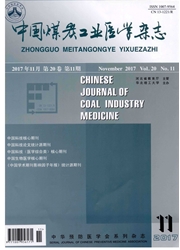

 中文摘要:
中文摘要:
目的报道家族性淀粉样变多发性神经性损害(familial amyloidotic polyneuropathy,FAP)患者腺体组织存在淀粉样小体,用于探讨淀粉样变形成机制。方法 1临床收集转甲状腺素蛋白(transthyretin,TTR)相关淀粉样变患者,利用免疫亲和-质量分析装置法(Matrix assisted laser desorption ionisation time-of-flight mass spectrometry,MALDI-TOF/MS)法测定TTR基因突变类型。2刚果红(Congo red,CR)染色结合偏振光显微镜检查鉴定心脏组织是否发生淀粉样变沉积。3免疫组织化学染色鉴定淀粉样变沉积蛋白类型。4对FAP患者腺体组织进行形态分析以确定淀粉样小体的存在。结果1MALDI-TOF/MS分析结果确定TTR基因突变类型为ATTRVal30Met。2患者心脏组织经CR染色结合偏振光显微镜观察,确定淀粉样变沉积阳性,且沉积于小血管壁和心肌组织间隙。3免疫组织化学染色结果可见TTR免疫反应阳性,提示淀粉样变沉积前蛋白为TTR。4对胰腺组织进行分析发现腺体腔内可见CR染色阳性和绿色荧光淀粉样小体,未见其与TTR抗体存在免疫原性反应。结论 FAP患者胰腺组织发现淀粉样小体,且未发现其与TTR抗体之间存在免疫原性反应。
 英文摘要:
英文摘要:
Objective To report the existence of corpora amylacea in glandular tissues in patients with familial amyloidotic polyneuropathy(FAP)in order to investigate amyloid formation mechanism.MethodsTransthyretin(TTR)related amyloidosis patients were collected,and immunoaffinty-Matrix assisted laser desorption ionisation time-of-flight mass spectrometry(MALDI-TOF/MS)was used to determine the gene mutation type of TTR.Amyloid deposition in heart tissues was confirmed by Congo red(CR)stain and polarized light microscopy.Amyloid protein type was determined by immunohistochemistry.Glandular tissues in patients with FAP were analyzed to determine the existence of corpora amylacea.Results The gene mutation type was ATTRVal30 Met as shown by the results of serum TTR analysis with MALDITOF/MS.Amyloid was found in small blood vessels and myocardial interstitial in heart tissues,as confirmed by Congo red stain and apple green birefringence under polarized light microscopy.The amyloid protein was demonstrated to be TTR by immunohistochemistry.Corpora amylacea was found within the glandular lumens in pancreatic tissues,as determined by CR stain positive and apple green birefringence under polarized light microscopy and the negative immunogenicity reaction with TTR antibody.Conclusions Corpora amylacea is found in pancreatic tissues in patients with FAP,and it is negative immunogenicity reaction with TTR antibody.
 同期刊论文项目
同期刊论文项目
 同项目期刊论文
同项目期刊论文
 期刊信息
期刊信息
